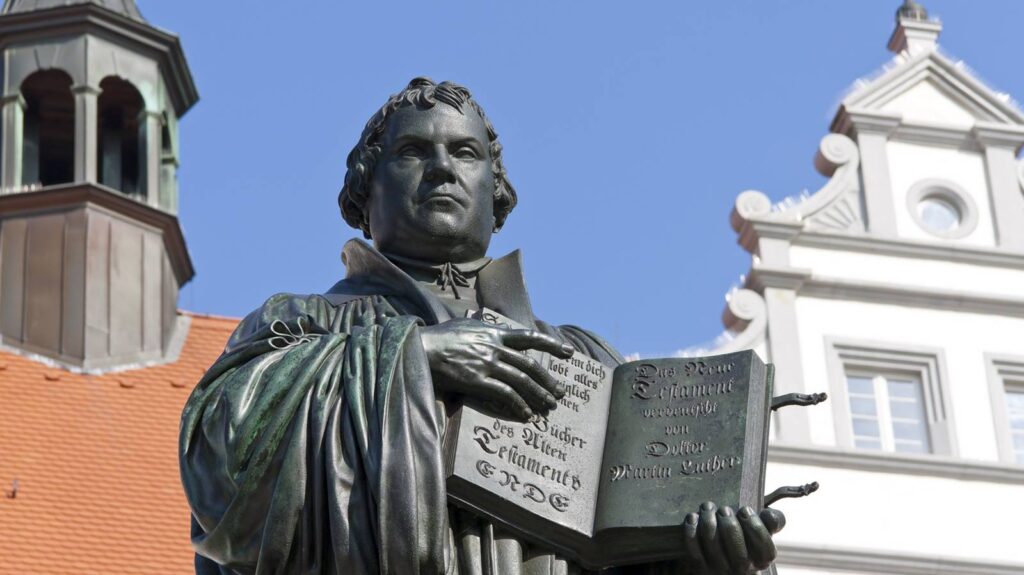This cantata, one of the shortest that Bach ever wrote, survives only through an incomplete set of parts. There is no score, and the tenor part is unfortunately lost, but scholars were able to reconstruct it satisfactorily. By virtue of the calligraphy of the surviving parts, we can date the piece to somewhere between 1729 and 1731.
In the absence of a score with a title page, the cantata’s place within the liturgical year is not clear, and the libretto doesn’t help since it doesn’t allude to readings from the Bible. Instead, it is a hymn by Martin Rinckart from 1636, without any additional insertions. The text of the 3 stanzas, focusing on thanksgiving, prayer and praise, would have also made the cantata appropriate for the Reformation Festival, a celebratory occasion for which Bach composed several cantatas over his years in Leipzig.
From a formal perspective, this cantata belongs to a group of “chorale cantatas” composed mostly during Bach’s second year in Leipzig, which share the characteristic of being based on hymns and their associated chorale tunes for several, if not all of their movements.
The chorale cantatas often feature a large-scale chorale fantasia to open, and this one is not an exception. The orchestra of 2 flutes, 2 oboes, strings and continuo engages with the choir in a lively and joyous construct of dense counterpoint and fugal entries. From the beginning the oboes hint at the chorale melody, and they provide support to the sopranos throughout the entire movement as they deliver the full chorale tune one line at a time. The tune is constantly surrounded by the rest of the voices and instruments weaving a dense texture around it, and the movement closes with the choir stating the opening line homophonically one last time.
The middle movement, a duet for soprano and bass with a thinned-out orchestra, starts with an instrumental ritornello not related to the chorale, but the vocal theme is based directly on it, ornamented and including a long note on the word “ewig” (“eternally”) as a word-painting device.
The final movement, which Dürr equates to the closing of an instrumental suite, is a gigue with its characteristic triple meter (not a coincidence, in my opinion, given that this stanza references the Holy Trinity). In this case the instrumental theme has the bones of the chorale tune, and the tune itself is again delivered by the sopranos while the rest of the instruments and voices dance the gigue around them.
